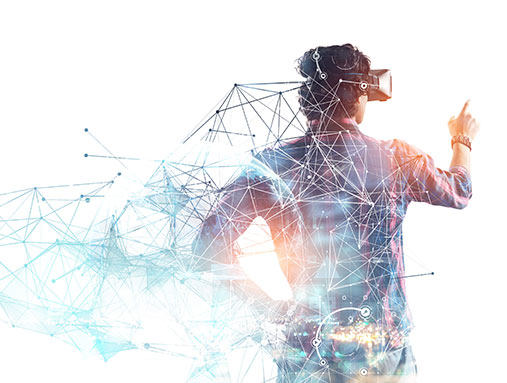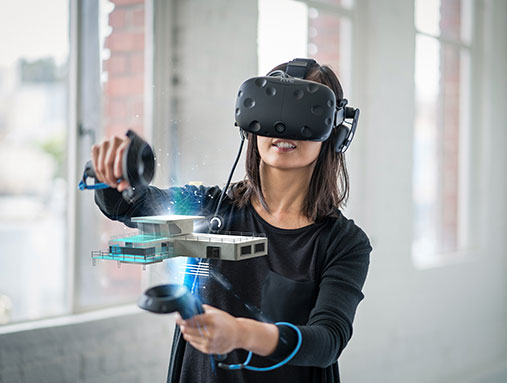Technological Challenge

VR/XR technology is now widely used in numerous fields to support learning processes (also in psychology), partly also in Geosciences, but very rarely to help collaboration – though tele-immersion and joint immersion in the same model environment is now possible. For instance, Stereopsia organized its first virtual workshop event, with the possibility to join it within an immersive environment, in Brussels (simulating the Atomium as conference center) in December 2020. In the field of logistics, industry 4.0 there is a wide range of applications of VR/AR to support the processes (e.g. remote maintenance of machines).
Full 3D dynamic numerical models exist for smaller regions, sites (up to 5*5*1km); here, the model shall include the whole final E.T. structure, being far from boundary effects, thus with a size of 20*20*2 km. Wave propagation is simulated from a point or fault rupture aerial source within the model.
Relation to the Einstein Telescope
Relation to the Einstein Telescope
Interaction with model elements, supporting collaborative model creation (dynamic interaction of the components), exchange between experts and stakeholders (and SMEs) within a collaborative tele-immersive virtual environment. There is a close interaction between the technology fields “3D earthquake and ambient noise wave propagation simulation” and “Geomodeling and GeoBIM integration”.
Innovation
- Collaborative interaction and illustration of geological/geophysical data
- Processing of big data of high complexity in the VR/AR systems
Collaborative virtual (tele-)immersive environments are certainly not common, especially in the field of geosciences. Partners in Aachen and Liege work on the use of VR/XR (Virtual/Extended Reality) technology to support 3D geo- and numerical model construction, allowing working group members to ‘meet’ and thus collaborate within the model. This technology certainly may also help replace the current 2D tele-conferencing tools (Zoom, etc.), as it allows for a simulation of a full 3D virtual immersive meeting room, where participants appear as avatars.
A collaborative virtual immersive laboratory is now being installed in some E-TEST partner laboratory.
Industrial relevance and further application fields
There is a potential to use the interaction of engineering data and geological/ geophysical data for civil engineering issue (e.g. tunnel construction or other underground constructions). GeoBIM is a field of highly dynamic developments with a huge need of spatial modelling of relevant geological and technical data.
Also in the field of precision agriculture or in the development of new agricultural approaches the VR/AR technology can help to get a better idea of the soil layer structure.
We are open to any other companies’ proposals.
References
For further information and more details about this technology field, please check the following Einstein Telescope Design Reports.
E-TEST Conceptual Design Report:
Einstein Telescope Conceptual Design Report:
Site and Infrastructure: Pages 161-192
Contact to the Einstein Telescope ecosystem
Are you active in this field of technology? Do you have an innovative approach to meet the requirements for Collaborative research in joint (tele-) immersive virtual environments ? Then take note of our tenders, join our challenges or simply get in contact with us. Furthermore, you can take a look at the mapping displaying the ET-relevant cempetencies in the EMR-Region. If you would like to be part of this mappink, please contact the business development managers.
Business development contacts
Peter Gier
AGIT DE – p.gier@agit.de
Matthias Grosch
NMWP.NRW DE – matthias.grosch@nmwp.de
Michel Stassart
Skywin BE – michel.stassart@skywin.be
Annick Pierrard
ULiège BE – a.pierrard@uliege.be
Maxime Corvilain
POM Limburg BE – maxime.corvilain@pomlimburg.be
René Kessen
LIOF NL – rene.kessen@liof.nl
Scientific contacts
Florian Wellmann
RWTH Aachen DE – wellmann@aices.rwth-aachen.de
Hans-Balder Havenith
ULiège BE – hb.havenith@uliege.be


